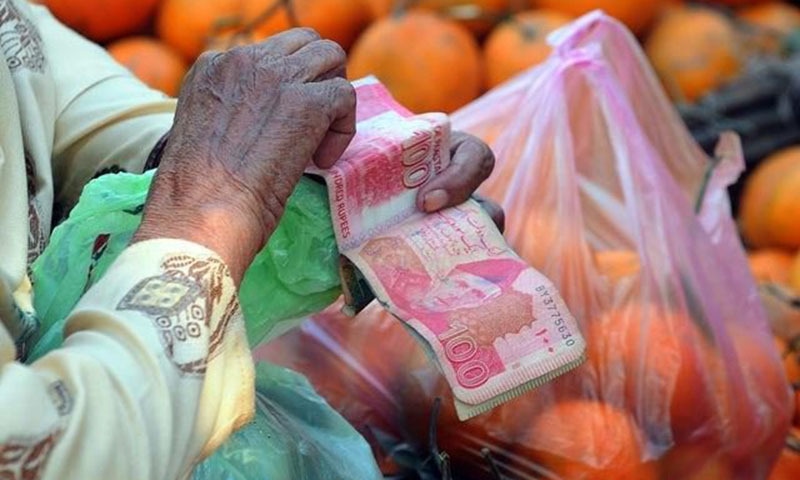By Staff Reporter
ISLAMABAD: The inflation edged higher in December, keeping up a year-long streak of soaring prices, but a retreat in core pressures could open the door for the central bank to loosen its grip on rates in the next policy meeting.
The increase in headline inflation, measured by the Consumer Price Index (CPI), was driven by higher food and energy costs, which deviated from the government’s earlier forecast of 25.5 to 26.5 percent in early December.
On a monthly basis, inflation increased by 0.8 percent in December, compared to 2.7 percent in November, the Pakistan Bureau of Statistics (PBS) said.
The spike in housing and utility costs, rising 37.68 percent from November’s 32.97 percent, was a key factor, with this category carrying nearly one-fourth of the weightage in the CPI basket. On a month-to-month basis, these items became 3.56 percent costlier than the previous month.
Transport costs, which include fuel prices, increased by 28.60 percent year-on-year and 0.81 percent month-on-month in December.
For the first half of the fiscal year (July-Dec), average inflation stood at 28.8 percent compared to 25 percent in the same period of the previous fiscal year, exceeding the government’s target of 21 percent and the State Bank of Pakistan’s (SBP) range of 20 to 22 percent.
The average inflation rate for the calendar year 2023 was 31 percent, compared to 20 percent in 2022.
However, core inflation, which excludes volatile food and energy prices and is a key factor in policy rate decisions, declined to 18.2 percent in December from 18.6 percent in November on a year-on-year basis.
On a month-on-month basis, core inflation also eased to 0.5 percent from 0.8 percent in November.
This could give the central bank some room to cut interest rates in its next policy meeting, which have been kept at at record 22 percent since July 2023, despite calls from businesses to lower them to spur economic growth.
The bank kept its key rate unchanged in its last meeting in December as it waits for the effects of previous hikes to filter through the economy and further tame retail inflation.
Food inflation, which accounts for nearly 35 percent of the CPI basket, also moderated to 27.5 percent in December from 27.95 percent in November on a year-on-year basis.
On a month-on-month basis, food inflation decreased by 0.49 percent, mainly due to a sharp drop in prices of tomatoes and potatoes, which fell by 42 percent and 18.6 percent respectively.
However, some food items such as onions, dry fruits, eggs and sugar became more expensive in December, increasing by 30.8 percent, 5.2 percent, 4.7 percent and 2.5 percent respectively.
Among non-food items, electricity charges increased by 15.76 percent, transport services by 12 percent and woolen readymade garments by 4.02 percent on a month-on-month basis.
Urban inflation was at 30.9 percent and rural at 27.9 percent in December, slightly higher than the previous month’s 30.4 percent and 27.5 percent respectively.
Analysts expect the inflation rate to ease in the coming months, as local fuel prices have declined and the base effect of last year’s high inflation will kick in.
“We anticipate CPI inflation in coming months to remain on lower side amid decline in local fuel prices and high base effect of last year,” said Muhammad Sohail, chief executive of brokerage Topline Securities.
Copyright © 2021 Independent Pakistan | All rights reserved




